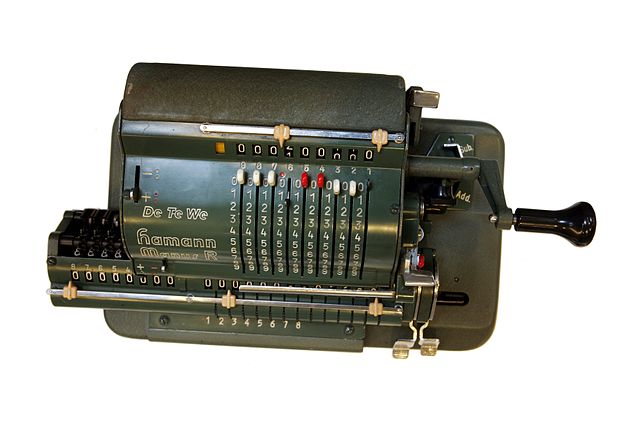Mechanical Calculator
Select a calculation and enter values.
Calculation Details
- Torque: τ = F × r
- Linear Power: P = F × v
- Rotational Power: P = τ × ω
- Kinetic Energy: KE = ½ × m × v²
- Potential Energy: PE = m × g × h
- Centripetal Force: F = m × v² / r
Ensure all inputs are in standard SI units.
The Fascinating History of Mechanical Calculators
What is a Mechanical Calculator?
A mechanical calculator is a hand-operated device that performs basic arithmetic operations through intricate systems of gears, levers, and wheels. These remarkable machines were the primary computing tools for scientists, engineers, and businesses from the 17th century until the 1970s.
Key Historical Milestones
| Year | Innovation | Inventor |
|---|---|---|
| 1642 | Pascaline (Addition/Subtraction) | Blaise Pascal |
| 1820 | Arithmometer (First Commercial Success) | Charles Xavier Thomas |
| 1874 | Odhner Arithmometer | Willgodt Theophil Odhner |
How Mechanical Calculators Worked
These complex machines used three main components:
- Input Mechanism: Number wheels or levers
- Calculation System: Interlocking gears and stepped drums
- Output Display: Rotating number wheels or printed results
Famous Models
Iconic Mechanical Calculators
- Pascaline (1642) - First functional calculator
- Curta Calculator (1948) - "Math Grenade" pocket calculator
- Monroe Calculator (1912) - American office standard
- Brunsviga (1892) - German engineering marvel
The Decline and Legacy
Mechanical calculators were gradually replaced by:
- Electromechanical calculators (1960s)
- Electronic calculators (1970s)
- Digital computers (1980s+)
Why Mechanical Calculators Matter
These machines paved the way for modern computing by:
- Developing early logic systems
- Creating user interface standards
- Establishing calculation accuracy standards


